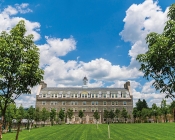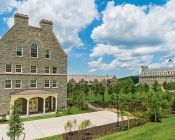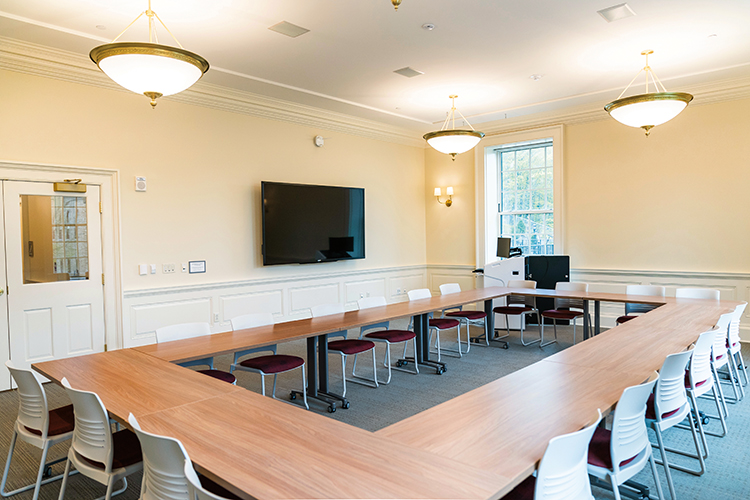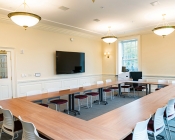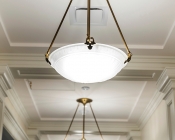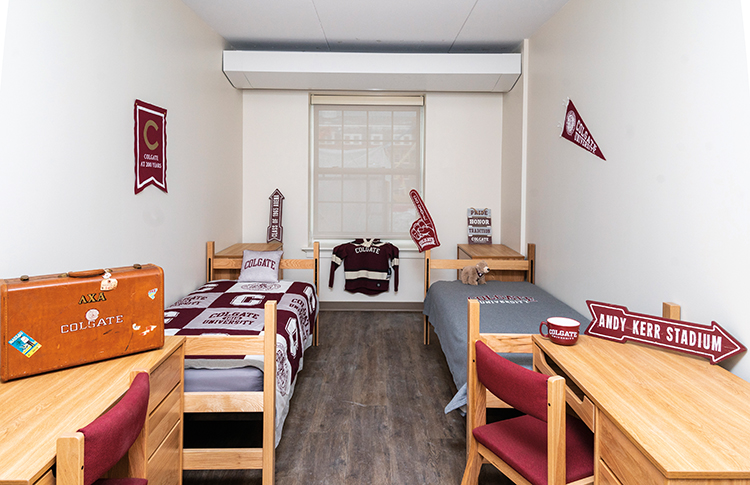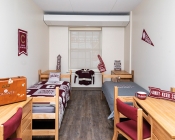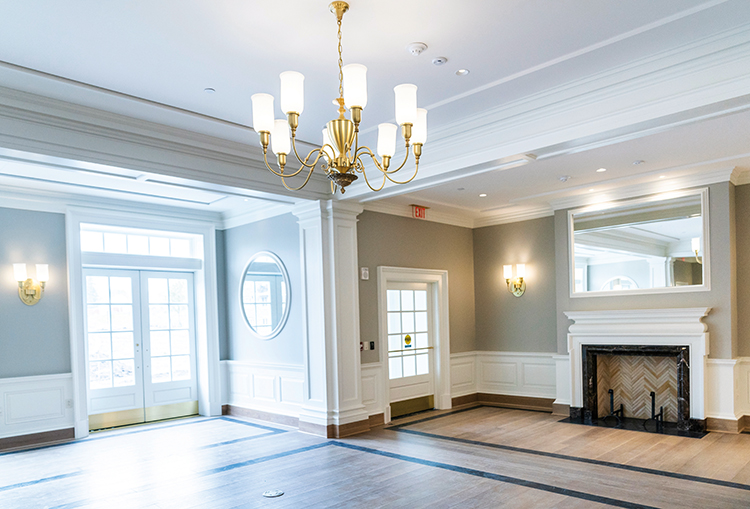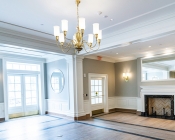As the Bicentennial year comes to an end, campus development is at the forefront of changes to the University. One of its first strides is two new upper campus residence halls, which open to students this fall. But before they could open to students, each hall needed one last furnishing: a name. Learn more about Jane Pinchin and Burke halls:
- Jane Pinchin Hall, the westernmost residence, is named in honor of Jane Lagoudis Pinchin, former interim president, former provost and dean of the faculty, and Thomas A. Bartlett Chair and professor of English emerita. An anonymous couple with deep ties to the University — who wished to recognize the essential work of Colgate faculty — donated $10 million to name the residence. They donated an additional $5 million in support of student financial aid.
- Its easternmost counterpart is named Burke Hall, in recognition of a $10 million gift from Gretchen ’81 and Steve ’80 Burke P’11, ’20.
- The halls’ design, by the architecture firm of Robert A.M. Stern Associates, and their role in Colgate’s Residential Commons system inspired the Burkes, who were both resident advisers while students.
- The buildings adhere to LEED Silver sustainability standards.
- Each will provide housing for 100 students as well as new classrooms and seminar rooms, offices, and student lounges.
- Featuring native stone and design elements that reflect other buildings across campus, the halls frame a new quadrangle designed by Michael Van Valkenburgh Associates.
- These are the only new residential additions to the upper campus since Stillman Hall was completed in 1927.
- Both halls will be part of the Residential Commons vision that connects students with the campus’s academic core and with one another by fostering strong community through integrated intellectual, social, and leadership programs.
The new residence halls also boast several sustainability features. Here’s a handful:
- Built using recycled materials and materials sourced from within 500 miles of the site, including stone from Buffalo, N.Y.
- The project uses native planting, which dramatically reduces the need for irrigation and reduces storm water runoff by 80 percent.
- Window switches tied to valance units turn off heating/cooling when the windows are open.
- Efficient plumbing fixtures reduce potable water use by almost 45 percent
- Low-flow faucets in the kitchen sinks and public bathrooms reduce the overall hot water consumption by 50 percent.
- There is a 47 percent reduction in installed interior lighting and 72 percent lower exterior lighting power by using efficient LED fixtures.


